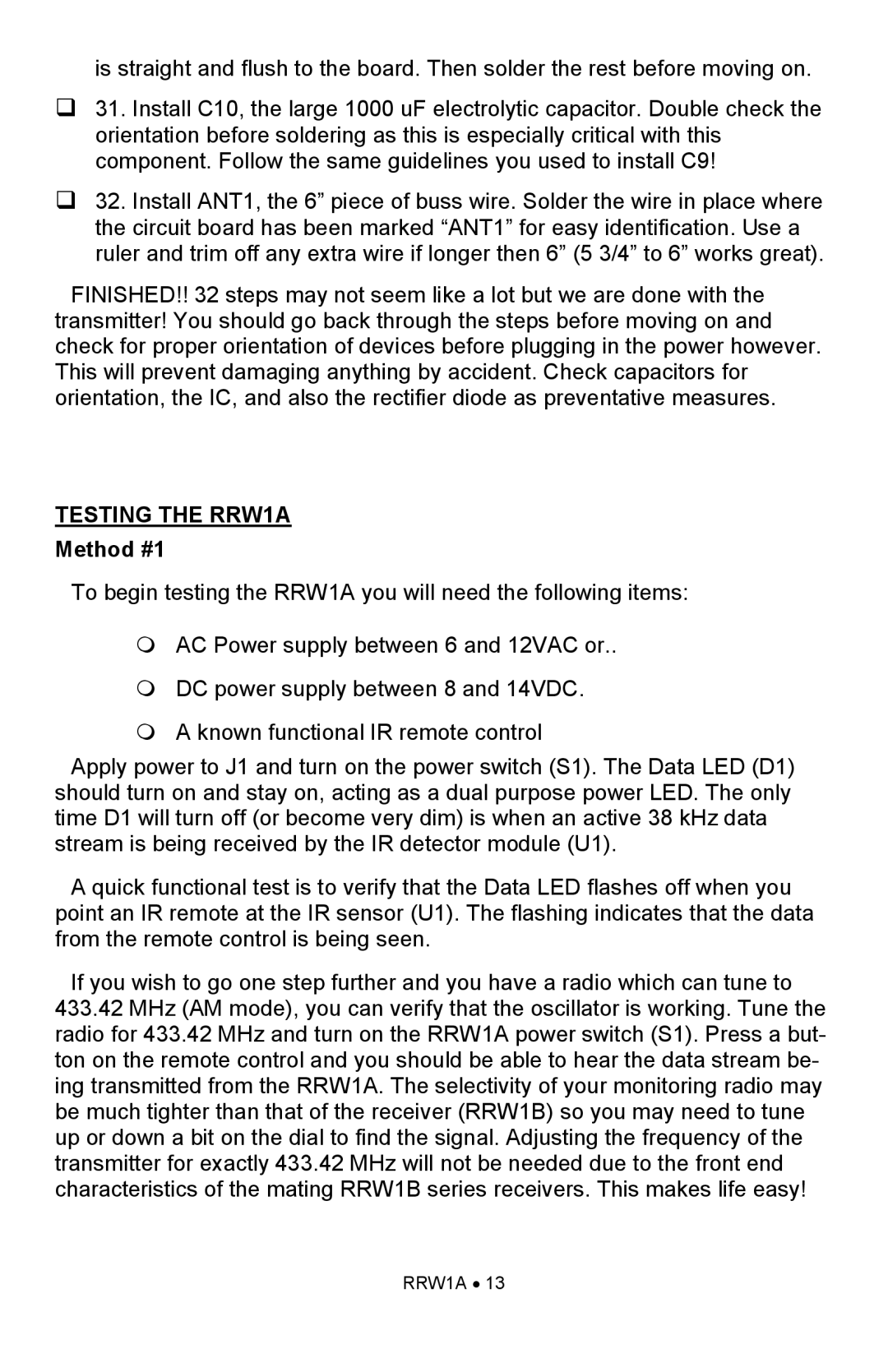RRW1A specifications
The Ramsey Electronics RRW1A is a versatile radio frequency (RF) wireless microphone system that stands out due to its robust features and reliable performance. Designed primarily for educational institutions, conferences, and public speaking events, the RRW1A offers a user-friendly experience paired with superior audio quality.One of the main features of the RRW1A is its RF transmission technology, which allows for seamless communication over distances of up to 300 feet. This range is particularly beneficial in larger venues, enabling users to move freely without sacrificing audio clarity. The device operates within a specified frequency band to minimize interference, ensuring a clean audio signal. This digital frequency modulation is complemented by an assortment of selectable channels, allowing users to switch frequencies when faced with potential interference from other devices.
Another significant characteristic of the RRW1A is its dual-channel operation. This feature enables users to connect two different microphones or audio sources simultaneously, making it an ideal choice for panel discussions or multi-person presentations. The system supports both dynamic and condenser microphones, providing flexibility based on user preferences.
The RRW1A also features a built-in rechargeable battery system, offering convenience for users who need a reliable and portable solution. The runtime of the battery extends through long sessions without the anxiety of losing power. Additionally, the device includes LED indicators that show battery life and signal strength, allowing users to monitor the status easily.
Ease of use is a hallmark of the RRW1A, equipped with a simple interface and compact design. The setup process is straightforward, requiring minimal technical knowledge. Users can quickly connect and start broadcasting, making it an accessible tool for educators and event organizers alike.
Moreover, the RRW1A is built with durability in mind. Its rugged construction withstands the rigors of frequent use in various environments. This reliability makes it a preferred choice for both rental services and permanent installations.
In summary, the Ramsey Electronics RRW1A is a powerful and flexible RF wireless microphone solution, featuring RF transmission technology, dual-channel capability, built-in rechargeable batteries, and user-friendly operation, making it an excellent choice for anyone seeking a high-quality audio solution for various applications.
